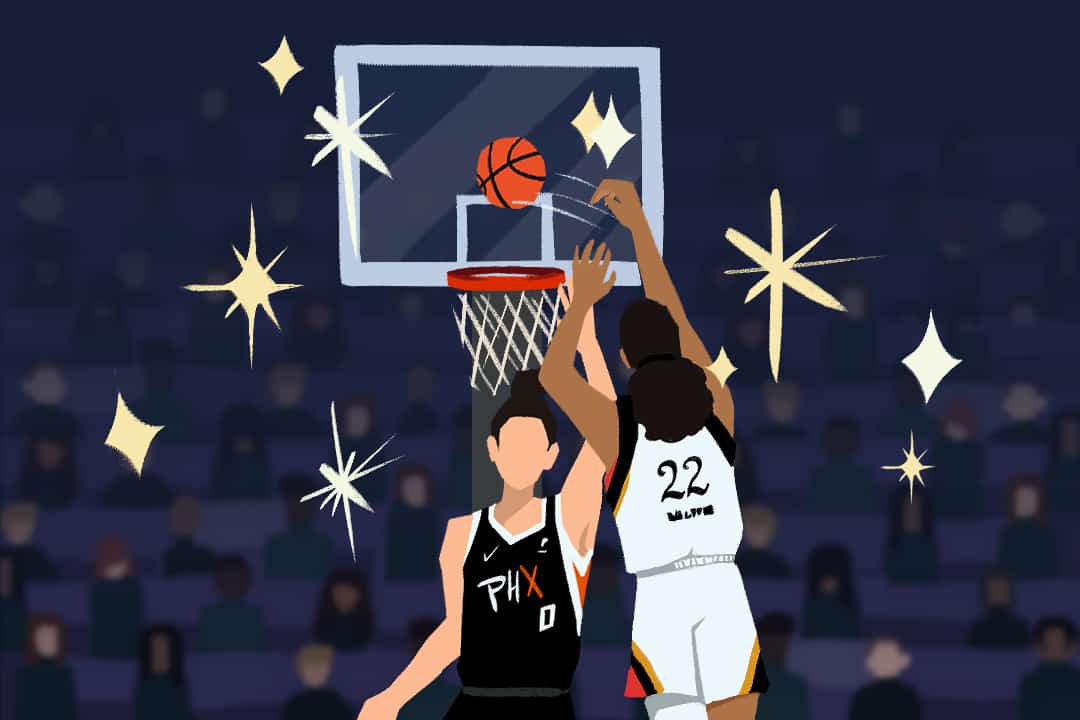In the long book of modern sports politics, another chapter has just been written. On October 17, 2021, the Chicago Sky won the WNBA championship. This was both the first win for the franchise and the first Chicago basketball win since the Bulls won the NBA championship in 1998. Despite the monumental win, though, some shocking videos showed a very low fan turnout at the championship parade.
While the parade does seem to have had low attendance, the Chicago Tribune claimed that at the ceremony celebrating the championship, which featured speeches from stars of the team, almost every seat was filled. But the ceremony pavilion only seats 11,000 people, which is still quite miniscule compared to the 500,000 people that attended the Milwaukee Bucks championship parade.
This story signifies the rebirth of the two biggest plagues of the WNBA: viewership and player salaries. WNBA players’ protests for a larger salary became a big issue in 2018 when athletes asked for a bigger portion of the WNBA’s overall revenue. It is estimated that WNBA players get 22 per cent of the league’s revenue, while NBA players get 50 per cent.
Why isn’t this number equal? Because of one pretty big issue: the WNBA has yet to turn a profit in a single season since its inception.
However, there’s a key fault in all of those discussions: the fact that they are trying to draw direct comparisons between the NBA and the WNBA, which should never be compared to each other in terms of profit or viewership.
The first reason is that the two leagues have been around for different amounts of time. The NBA was established in 1949 and has a generous 47-year headstart on the WNBA, considering it was only established in 1996. Comparing two leagues that have been around for different amounts of time holds no merit. The NBA has had more time to attract talent with regard to players, coaches, and fans.
Secondly, the two leagues target two different consumer bases. A goal for most WNBA players is to have young girls watch them play, but this goal is taking a while to accomplish. In an interview in 2018, Washington Mystics forward Elena Delle Donne said, “I just believe that young women haven’t seen us. And you can’t follow something that you haven’t seen.”
There is also a lack of investment in the WNBA’s advertising. In early 2018, NBA Commissioner Adam Silver admitted that the WNBA indeed did have a “marketing problem,” saying that they have to “do a better job connecting to young people and to get them to be interested in women’s basketball.” In the three years that have passed since then, the WNBA’s collective bargaining agreement has instituted new rules, including 1.6 million dollars for marketing agreements. It could be only a matter of time before views follow.
The NBA and WNBA also feature two extremely different styles of basketball. For example, only seven WNBA players have dunked in the history of the league, whereas in the NBA, there are thousands of dunks every season. WNBA players cannot do everything that NBA players can due to differences in skill sets, but that doesn’t necessarily mean the league is less fun to watch. A high percentage of older men watch the WNBA because of how it highlights the fundamentals of the game.
Sports fans also constantly sacrifice quality for excitement. Most college basketball teams would get blown out by NBA teams, yet millions of fans still tune in. Televised high school football games include players that have much less experience than NFL players and yet there is enough interest for ESPN to broadcast them. The WNBA could gain popularity if support like the above is applied to their league.
Ultimately, the low attendance at the Chicago Sky parade doesn’t mean anything for the WNBA in the long term. Equality in the WNBA is not up to Adam Silver, it’s not up to the WNBA executives, and it’s not up to the coaches; it’s up to the fans. Regardless of which side of the coin you ascribe to, go watch an WNBA game and then develop a point of view — because views are exactly what will make or break this league.


